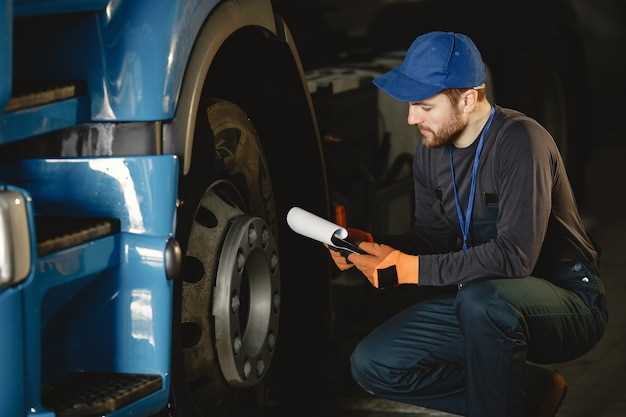
Maintaining the integrity of fleet brake systems is crucial for the safety and efficiency of all commercial vehicles. Routine maintenance ensures that brakes operate effectively, allowing drivers to respond to road conditions and emergencies without undue delay. Regular inspections and servicing can prevent costly repairs and enhance overall fleet performance.
Understanding the components of fleet brake systems is essential to performing proper maintenance. This includes checking brake pads, rotors, brake lines, and fluid levels. Each component plays a vital role in ensuring that brakes function optimally. Ignoring even minor issues can lead to significant safety hazards and increased operating costs.
Implementing a comprehensive maintenance schedule is another best practice to consider. Such a schedule not only promotes consistency but also ensures that all vehicles within the fleet receive the same level of attention regarding their brake systems. Proper documentation of services performed helps in tracking the health of each vehicle and can be used to predict when further maintenance may be necessary.
In conclusion, establishing robust maintenance protocols for fleet brake systems is a fundamental responsibility for fleet managers. By prioritizing routine checks and fostering a culture of safety, fleets can reduce the risk of brake failure, protect drivers, and enhance the longevity of their vehicles.
Regular Inspection Intervals for Fleet Brake Components
Maintaining the integrity of brake systems is crucial for the safety and efficiency of any fleet. Regular inspection intervals for brake components ensure that potential issues are identified and remedied before they escalate into serious problems. It is recommended that fleet managers establish a routine inspection schedule that aligns with the manufacturer’s guidelines and specific usage patterns of the vehicles.
Typically, brake systems should be checked at least once every 6,000 to 10,000 miles, depending on the operating conditions and the type of vehicles in the fleet. Factors such as load capacity, terrain, and driving habits can influence how often inspections should occur. Vehicles used in heavy stop-and-go traffic may require more frequent checks than those operating on open highways.
Dedicating time for comprehensive inspections allows for the assessment of various brake components, including pads, rotors, calipers, and hydraulic systems. During these checks, it’s essential to look for wear indicators, cracks, or signs of corrosion that may compromise braking efficiency. Ensuring a functional condition of all brake parts not only extends their lifespan but also enhances overall vehicle performance.
Documentation of each inspection and any repairs performed is vital for maintaining historical records and ensuring accountability. This information can be invaluable during audits and when making informed decisions regarding vehicle replacements or upgrades. Regular checks empower fleet managers to make proactive adjustments to maintenance schedules based on real-world performance data.
Incorporating a checklist during inspections can streamline the process. It can provide a standardized method to check all critical areas of the brake system uniformly. Fleet operators should also encourage drivers to report any unusual sounds or performance issues that may indicate a failing brake component. This collaborative approach helps maintain the fleet’s safety and reliability.
Identifying Wear Indicators and Signs of Brake System Failure

Maintaining the integrity of a fleet’s brake systems is crucial for safety and efficiency. Identifying wear indicators early can help prevent significant failures and costly repairs. Regular checks are essential for fleet managers to ensure the brakes are functioning optimally.
One of the most common wear indicators is the brake pad thickness. If the pads are worn down to 3mm or less, it’s time to replace them. A simple visual inspection can reveal this, and fleet personnel should incorporate this check into their routine maintenance schedule.
Additionally, listen for unusual sounds when brakes are applied. A squealing or grinding noise often signifies that the brake pads are worn out, or the rotors might be damaged. These sounds indicate immediate action is needed to avoid further damage to the braking system.
Vibrations felt in the brake pedal during braking could signal warped rotors. This condition should be addressed promptly, as it can affect the overall braking performance and safety of the vehicle. Fleet operators should regularly check for such signs during vehicle inspections.
Another critical factor is the brake fluid level and condition. Low fluid levels or fluid that appears dark and contaminated can lead to brake system failure. Fleet personnel must check the brake fluid regularly to avoid compromising braking efficiency.
Temperature indicators can also help in identifying potential brake system issues. If brakes overheat, either from excessive use or a malfunctioning component, it can lead to brake fade, reducing stopping power. Ensure that fleet operations monitor brake temperatures, especially during heavy usage.
Finally, pay attention to the warning lights on the vehicle’s dashboard. Many modern vehicles are equipped with systems that alert drivers to brake system issues. Ignoring these warnings can lead to severe consequences, making it imperative for fleet managers to educate drivers on the importance of addressing such alerts.
Maintaining Brake Fluid Quality and Proper Levels

Maintaining the quality and levels of brake fluid is crucial for the optimal performance of fleet brakes. Routine checks should be part of any fleet maintenance program, as brake fluid degradation can directly impact braking efficiency and safety.
Brake fluid is hygroscopic, meaning it absorbs moisture from the environment over time. This moisture can lower the boiling point of the fluid, leading to brake fade and reduced performance under high temperatures. Regular inspections of brake fluid quality should include checking for discoloration and moisture content, as well as replacing it according to manufacturer recommendations.
Proper fluid levels are equally important. Low brake fluid levels can indicate leaks or other issues within the brake system, which can compromise safety. Fleet managers should establish a routine where fluid levels are checked frequently, particularly before long trips or after significant mileage accumulations.
Utilizing high-quality brake fluid that meets the specifications for the fleet’s vehicles ensures maximum performance. Additionally, the use of compatible fluids helps to maintain the integrity of brake components and prevents corrosion, which can be an issue in poorly maintained brake systems.
In summary, maintaining brake fluid quality and proper levels is an essential aspect of fleet brake system upkeep. It not only enhances safety but also prolongs the life of the brakes, ultimately contributing to the efficiency of the entire fleet operation.




